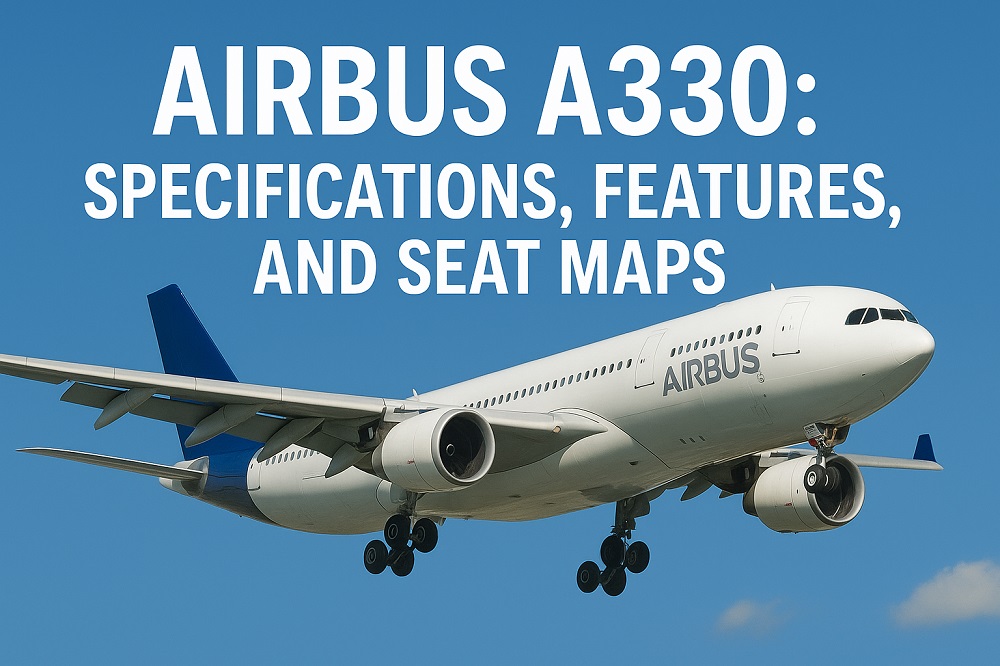Discover the engineering marvel that has revolutionized modern aviation – the Airbus A330. This comprehensive guide explores the aircraft’s specifications, remarkable features, and diverse variants that have shaped commercial and military aviation.
Overview of the Airbus A330
The Airbus A330 stands as a testament to modern aviation engineering excellence. This medium-size, wide-body aircraft combines reliability, flexibility, and cost-efficiency with its distinctive low-wing cantilever monoplane design and sophisticated six-screen glass cockpit.
Since its inception, the A330’s capabilities have evolved significantly. The maximum takeoff weight (MTOW) has increased from 212 tonnes to 242 tonnes in 2015, enabling the aircraft to cover impressive distances of up to 6,350 nautical miles. These enhancements have established the A330 as a versatile and profitable choice for airlines worldwide.
👉 Jet engine stands for lease 👈
History and Development of the Airbus A330
The A330’s story began in the mid-1970s as part of Airbus’s strategic initiative to develop larger A300 derivatives. The simultaneous launch of the A330 twinjet and A340 quadjet in June 1987 marked a pivotal moment in aviation history.
Through innovative cost-saving strategies, Airbus developed both aircraft using identical fuselage and wing designs, resulting in approximately US$500 million in savings. Initially designated as B9 and B11, later TA9 and TA11 (‘TA’ for ‘twin aisle’), this development approach has led to continuous improvements in operational efficiency.
Airbus A330 Variants
- A330-800 and A330-900 – Core commercial passenger variants of the A330neo series
- A330 MRTT (Multi Role Tanker Transport) – Military aerial refueling variant
- CC-330 Husky – Canadian military variant
- Beluga XL – Specialized cargo variant for oversized aircraft components
Specifications of the Airbus A330
The A330’s engineering excellence is evident in its sophisticated design features, including the twin-engine configuration mounted under wings and advanced landing gear system with two-wheel nose gear and four-wheel bogie main legs. The six-screen glass cockpit, similar to the A320, enhances operational efficiency and pilot awareness.
Dimensions and Capacity
| Dimension | Measurement |
|---|---|
| Length | 58.82 meters |
| Wingspan | 60.30 meters |
| Height | 17.39 meters |
| Fuselage Diameter | 5.64 meters |
👉 Engine Stand Trent 700 For Lease 👈
Performance and Range
- A330-300: Range up to 6,350 nautical miles
- A330-800: 8,150 nautical miles (15,090 km) with 257 passengers
- A330-900: 7,200 nautical miles (13,330 km) with 287 passengers
- Maximum speed: 912 kilometers per hour
- Cruising speed: 875 kilometers per hour
Engine Options
The A330 offers three powerful engine choices, each delivering specific advantages for different operational requirements:
- General Electric CF6
- Pratt & Whitney PW4000
- Rolls-Royce Trent 700
Features of the Airbus A330
The Airbus A330 exemplifies aviation engineering excellence through its distinctive low-wing cantilever monoplane design. The aircraft features two engines efficiently mounted under the wings, complemented by a robust undercarriage system consisting of a two-wheel nose gear and two four-wheel bogie main legs for exceptional stability.
- Advanced six-screen glass cockpit inherited from the A320
- Enhanced pilot situational awareness and operational efficiency
- Increased maximum takeoff weight from 212 to 242 tonnes (2015)
- Extended range capability up to 6,350 nautical miles
- Improved payload-range performance for cost-efficient operations
Cabin Layout and Comfort
Drawing inspiration from the A320 Airspace cabin, the A330 delivers exceptional passenger comfort through innovative design features:
- Spacious XL luggage bins reducing cabin clutter
- Modern touchless lavatory features for enhanced hygiene
- Flexible seating configurations for various route requirements
- Advanced lighting systems for improved ambiance
- Noise reduction technologies for a quieter cabin environment
Technological Advancements
The A330 showcases pioneering aviation technology through its advanced systems and materials:
- Innovative Fly-By-Wire system replacing conventional manual controls
- Advanced composite materials for improved fuel efficiency
- Enhanced aerodynamic design for optimal performance
- State-of-the-art avionics and flight management systems
- Continuous technological improvements for increased reliability
👉 Engine Stand Trent 500/700 APS 👈
Airbus A330 Seat Maps
The A330’s versatile cabin architecture accommodates various seating configurations, exemplified by Delta Air Lines’ A330-300 (333) featuring three distinct classes: Delta One, Delta Comfort+, and Economy. This flexibility allows airlines to optimize their cabin layouts according to specific route requirements and market demands.
Seating Capacity and Configuration
| Configuration Type | Passenger Capacity |
|---|---|
| Typical Layout | 278 passengers |
| A330-200 Standard | 210-250 passengers |
| High-Density Layout | Up to 406 seats |
| Main Cabin Layout | 2-4-2 configuration |
Airlines Operating the Airbus A330
Major carriers worldwide have integrated the A330 into their fleets, utilizing its capabilities for medium to long-haul routes. Airlines like Delta Air Lines, Lufthansa, and American Airlines provide detailed seat maps through their websites and platforms like SeatGuru, enabling passengers to make informed seating choices and understand available amenities across different cabin sections.
- Airbus A320: Specifications, Features, and Seat Maps
- Airbus A340-300: Features, Specifications, and Performance
- Airbus A220: Features, Specs, and Benefits of the A220 Family
- Airbus Beluga: The Unique Transport Aircraft
- Airbus A340-600: Features, Specifications, and Performance
- Airbus A350: Features, Specs, and Innovations
- Airbus A319: Specifications, Seat Maps, and Features
- Airbus A321neo: Features, Specs, and Benefits
- Airbus A321: Specifications, Features, and Seat Maps
- Airbus A380: The Ultimate Guide to the World’s Largest Passenger Aircraft
- Airbus A330-300: Specifications, Seat Maps, and Amenities
- Airbus A350-900: Features, Specs, and Seating Guide

